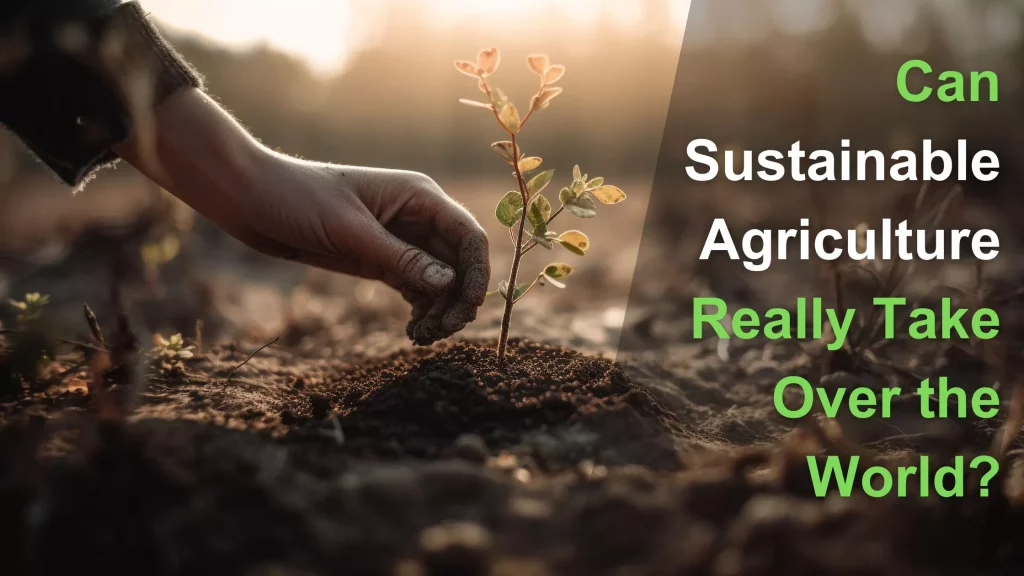The global agricultural environment is experiencing substantial alteration because of technological improvements. Precision agriculture, also known as smart farming, has emerged as a game changer in the agricultural industry, bringing new solutions to boost productivity, minimize resource consumption, and optimize farming practices. While smart farming has the potential to transform food production, there are worries about its impact on biodiversity and the environment. In this blog, we will look at the advantages of smart farming and biodiversity and how we may strike a careful balance between innovation and conservation to guarantee agriculture and biodiversity have a sustainable future.
Smart Farming: An Overview
Smart farming is an integrated method that optimizes agricultural operations by leveraging cutting-edge technology such as the Internet of Things (IoT), artificial intelligence (AI), and data analytics. Farmers may use this novel way to make data-driven choices, accurately monitor crops, and manage resources economically.
Key components of smart farming
Essential components of Smart farming include:
- Sensors and Monitoring: In-field IoT sensors capture real-time data on soil moisture, temperature, humidity, and other critical characteristics. This information assists farmers in optimizing irrigation and fertilizations, resulting in increased crop yields and resource conservation.
- Remote Sensing and Drones: Unmanned aerial vehicles (UAVs) outfitted with cameras and sensors are used to swiftly and effectively monitor enormous areas of agriculture. Drones can detect crop stress, identify pathogens, and assess overall plant health, allowing for prompt treatments.
- Precision Farming Equipment: GPS-enabled smart tractors and machinery allow for precise planting, spraying, and harvesting. This lowers overlaps and waste, resulting in more efficient agriculture.
- Data analytics and artificial intelligence (AI): Data is collected and analyzed using AI algorithms, which provide essential insights and forecasts. AI-powered solutions aid in the optimization of planting schedules, pest control, and resource management.
- Irrigation Systems that are Automated: Water supply is adjusted by innovative irrigation systems based on real-time meteorological data, soil moisture levels, and crop water demands, ensuring that water is used efficiently.
Benefits of Smart Farming
- Increased production: Through optimized resource allocation and focused interventions, innovative farming practices increase crop yields and overall agricultural production.
- Resource Conservation: Smart farming lowers waste and minimizes environmental effects by accurately controlling water, fertilizers, and pesticides.
- Cost Efficiency: Better resource management saves farmers money, making agriculture more economically feasible.
- Sustainable Agriculture: Smart farming encourages environmentally friendly agricultural practices by reducing the usage of toxic chemicals.
- Better Decision-Making: Farmers may make more informed decisions using data-driven insights, lowering risks and boosting their chances of success.
Biodiversity Challenges
While the advantages of intelligent farming are apparent, it is critical to evaluate the implications for biodiversity and the environment. Among the significant challenges are:
- Loss of Habitat: The growth of agricultural areas and the employment of large-scale monoculture practices can result in habitat loss and fragmentation, causing wildlife ecosystems to be disrupted.
- Chemical Use: Even in precision agriculture, indiscriminate use of agrochemicals can kill beneficial insects, birds, and aquatic life, causing ecological imbalances.
- Genetic Erosion: High-yield crop variants may diminish biodiversity within crop species, increasing vulnerability to pests, diseases, and climate change.
- Pollution: Runoff from agricultural areas can contaminate neighboring bodies of water, producing pollution and harming aquatic life.
- Pollinator Population Fall: The fall of pollinator populations due to pesticide exposure and habitat degradation endangers the reproduction of many plant species.
Strategies for Balancing Innovation and Conservation
While tackling the issues of intelligent farming is critical, it is also crucial to investigate ways that support the peaceful coexistence of innovation and conservation:
- Agroecology: Promoting agroecological practices can aid in balancing agricultural output and biodiversity conservation. Agroecology encourages diversified agricultural systems while reducing chemical inputs and improving natural ecosystem functions.
- Precision Conservation: Using precision agriculture techniques to maximize production while protecting biodiversity. Farmers may prioritize conservation efforts and apply specific strategies to safeguard animals and native plants by identifying areas of high ecological significance.
- Ecosystem-based Farming: Incorporating natural habitats into agriculture, such as hedgerows, field edges, and ponds, may create wildlife sanctuaries, support pollinator populations, and increase biodiversity.
- Implementing Integrated Pest Management (IPM): These practices can reduce pesticide use while maintaining pest control through biological, mechanical, and cultural approaches.
- Incentives for Sustainability: Governments and organizations can offer incentives and subsidies to farmers that embrace sustainable and biodiversity-friendly practices.
- Education and Awareness: To promote a conservation attitude, it is critical to raise awareness among farmers and the general public about the importance of biodiversity and its relationship to agriculture.
Conclusion
Smart farming can transform agriculture while also assuring food security and economic prosperity. It must, however, be adopted responsibly, with a thorough awareness of its possible implications on biodiversity and the environment. We can secure a more sustainable future for agriculture and the ecosystems it depends on by adopting sustainable and biodiversity-friendly practices that balance innovation and conservation. Embracing bright farming potential while respecting the fragile web of life is critical to creating a healthy and resilient agricultural environment in the face of a changing world.



